
I don’t profess to be an e-mail expert, but I get a few dozen e-mails a day and often several e-mails a day from people I haven’t met before. I also maintain connections with some people entirely through e-mail. Given how important e-mail is in today’s world, it is amazing how bad some people are using it. Here are some tips to improve your communication through e-mail.
1) English Rules Still Apply

I hate to even make this a point, but some people shift their writing skills down to the quality of a tween’s instant messenger chat-speak when sending an e-mail. This kind of communication might be fine in a casual setting where both parties know each other, but if you are trying to make a good first impression or look professional, make sure your grammar and spelling are in order.
2) Write What You Mean

Little kids will sometimes point or make hand gestures over the phone because they don’t realize the other person can’t see them. That may seem silly, but a lot of adults write their e-mails as if the other person is getting their body language and voice tonality to get their meaning.
Write what you mean in a clear fashion. If you want to be funny and lighthearted, do it in your choice of words. Sarcasm, playfulness or light teasing don’t translate well to an e-mail. Be clear to avoid misunderstandings later. I get at least a couple e-mails a week where I’m not sure what the person meant to say, it’s a lot harder to infer deeper meaning in a short e-mail than most people think.
3) Break Questions Away From Paragraphs
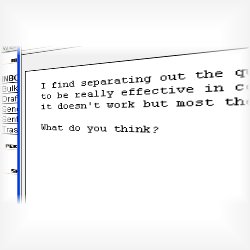
This is a biggie that I didn’t learn in any handbook on writing. Separate your questions or requests away from paragraphs. If you attach your question to the end of a paragraph of four or five sentences, the recipient might skim over it when reading his or her mail. I’ve noticed about a quarter of the time when I don’t separate out questions, I don’t get them answered.
Do you separate out questions from blocks of text like this?
4) Use Meaningful Subject Headings
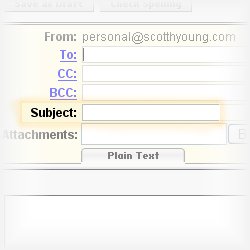
Use subject headings to convey meaning, not urgency or the type of communication. If I need to ask a friend about a blog plugin, I’ll use a subject heading like: “Plugin Question,” not, “Please Read!” or, “Question for you.” If your e-mail is short enough most people will still read it and get the point, but some people are especially busy and if your e-mail isn’t on their priority list they might not give it the time it deserves without an appropriate subject heading.
Make sure you don’t use headings like, “Hi,” or leave them blank. A lot of spam programs will leave similar e-mails and the person might easily hit the delete button on your genuine e-mail before opening.
5) Be Concise
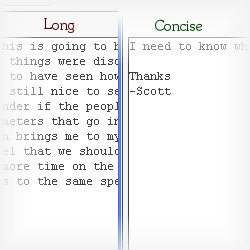
If you want to initiate a chat with someone, you don’t start talking nonstop for five minutes straight. Whenever you are sending a new e-mail, especially to someone you don’t know, keep it concise. If your e-mail has a point, make it early and keep it short. Long e-mails to chat work better if you have already established a banter.
6) Tell Me Who You Are
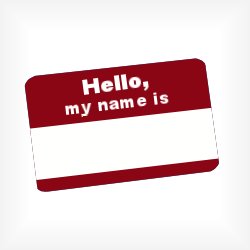
If I don’t know who you are, write a sentence or two about yourself. This doesn’t have to be a resume, but just to distinguish you from the other people I know only by a name. This goes for any first time communication over e-mail. You don’t need to make the e-mail a memoire, but if I only know you as johndoe@freemail.com I’m less likely to form a connection with you.
I often use something similar to: “Hi, This is Scott from scotthyoung.com, I’m a fellow blogger and I…” Short but if I’m reaching out to another blogger it let’s them know a little about who I am.
7) Always Reply Back to the First E-Mail
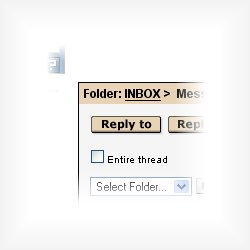
I always reply to the first e-mail in a thread sent to me. Unless otherwise stated, I assume that all e-mails with new subjects directed towards me need a reply. Even if the reply is as simple as, “Thanks, got your e-mail. -Scott.” When I don’t receive a reply from someone I worry that maybe my e-mail program didn’t send it to them or it got to their spam folder.
If you are getting dozens of e-mails you don’t have the time to personally handle, get an autoresponder notifying the person that you got their mail but don’t have time to respond to everything sent to you. There is no excuse for avoiding that first reply to that initial thread, even if you don’t expect to hear from that person again.
Differences Between Online-Only and Personal E-mail Contacts
These tips apply to all e-mails, but they apply even more for online-only contacts and for first contacts. I think the reason I get a lot of poorly written e-mails in my inbox is because many people are familiar with using e-mails as a supplement for the interactions they have with friends and coworkers. But if you are trying to maintain or create a completely digital connection, you need to pay attention to these rules for etiquette and communication.
These tips don’t take more time than writing a poorly written e-mail, they just take a bit more practice. It would take me just as long to write a horrible e-mail than an effective one. Saying that you don’t have time for grammar or spelling is unlikely and saying you don’t have time to write meaningful subject headings or breaking questions from paragraphs is ridiculous.
Remember that your words are your identity in an online communication. They are your clothing, your tonality, your status and you meaning. Make a good choice.


 I'm a Wall Street Journal bestselling author, podcast host, computer programmer and an avid reader. Since 2006, I've published weekly essays on this website to help people like you learn and think better. My work has been featured in The New York Times, BBC, TEDx, Pocket, Business Insider and more. I don't promise I have all the answers, just a place to start.
I'm a Wall Street Journal bestselling author, podcast host, computer programmer and an avid reader. Since 2006, I've published weekly essays on this website to help people like you learn and think better. My work has been featured in The New York Times, BBC, TEDx, Pocket, Business Insider and more. I don't promise I have all the answers, just a place to start.